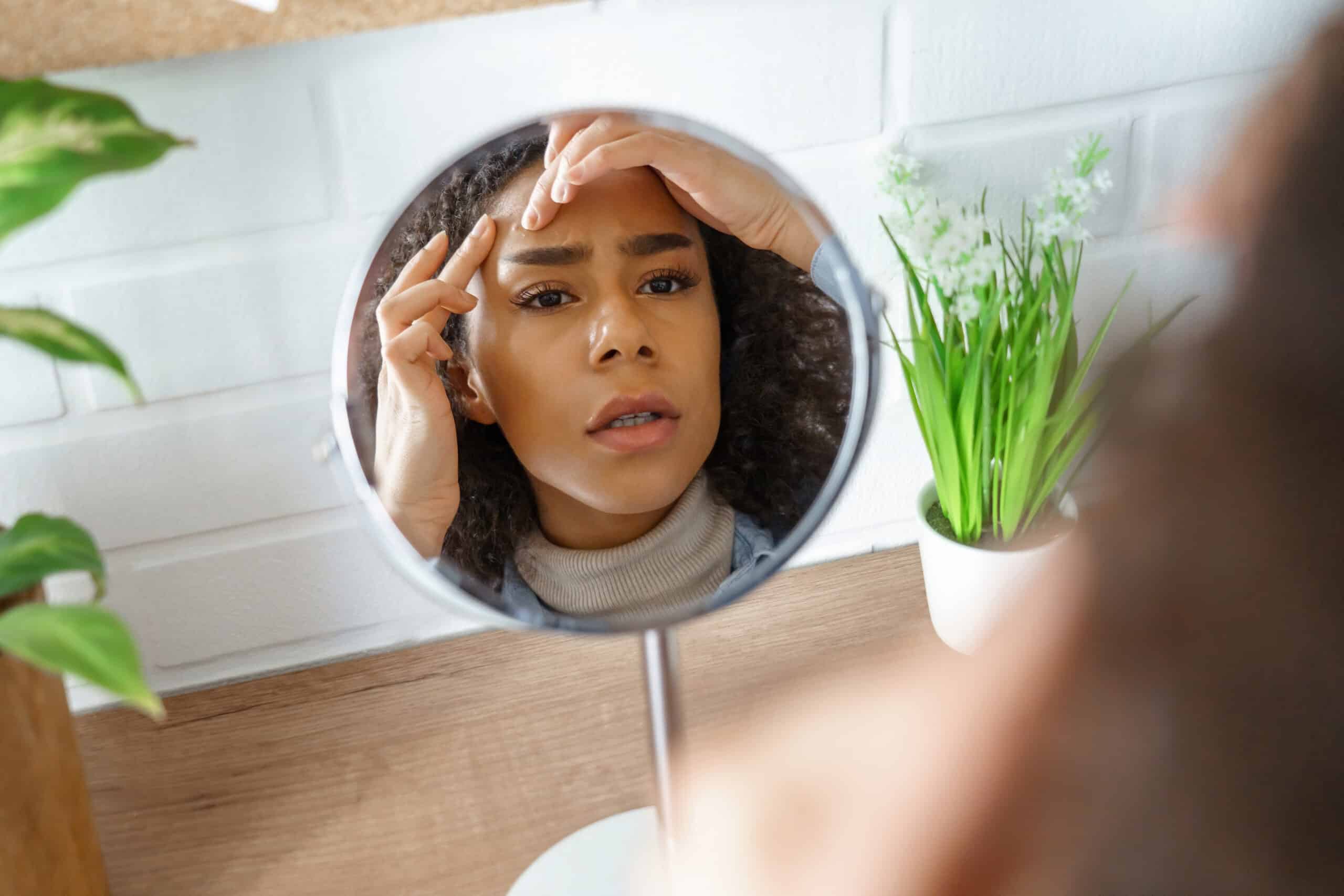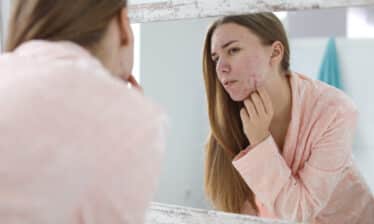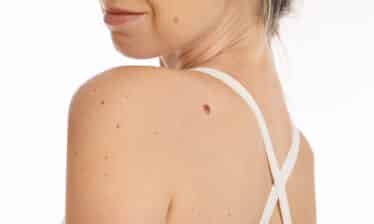Many people go to great lengths to achieve clear and youthful-looking skin. One of the most common antagonists to clear skin is acne or pimples. It’s a skin condition in which your pores (tiny holes in your skin) become blocked by dead skin cells, oil (sebum), and dirt. This can result in inflammation and the development of acne.1
Acne can occur on any part of the face, including the cheeks, nose, chin, jawline, forehead, and even temples.2 In this article, we’ll discuss everything you need to know about temple acne causes, treatments, and more.
What Causes Acne on Temples?
The most common causes of temple acne include:3
1. Sweating and headgear use
Using headwear like hats and helmets can trap your sweat at the temples, irritate the skin, and promote bacterial growth. This can clog your pores and cause inflammation, thus increasing your likelihood of developing acne.
2. Skincare, haircare, and cosmetic products
Oil-based or waxy skin and hair products like gels, dyes, pomades, and sprays can block your skin pores and lead to acne.
3. Poor hygiene
Not washing your face regularly and properly can cause a buildup of dirt, dead skin, and oil on your face, all of which have a great chance of clogging your pores and resulting in acne.
4. Hormone fluctuations
The hormones responsible for puberty have been closely linked to the development of acne. Even in adults, the changes in hormone levels can affect sebum (oil) secretion and thus cause acne breakouts.
5. Medications
The side effects of taking certain medications like corticosteroids, anticonvulsants, lithium, and barbiturates can involve the development of acne anywhere on the body or face, including the temples.
6. Stress
The stress hormone cortisol can promote increased sebum or oil production in your skin, leading to more clogged pores and acne breakouts.
7. Genetics
If you have a family history of acne, you’re more likely to develop temple acne.
How to Treat Acne on Temples
The most popular temple acne treatments and tips are as follows.4
- Try salicylic acid, benzoyl peroxide, or retinoid treatments, which are available over the counter.
- Develop a consistent skincare routine.
- Clean your headgear and pillowcases regularly.
- Avoid oil-based skin and hair products.
- Avoid skin irritants like rough clothing or bedding.
- Always wash your hands before touching your face.
- Use warm water, a mild facial cleanser, and a soft towel to wash your face.
- Stay hydrated, maintain a healthy diet, and avoid stressful situations.
- Use sun protection.
Acne can take several months to be resolved completely. In the meantime, be patient, switch out any suspicious products, continue treatment diligently, and stick to your skincare routine. Don’t try to pop your pimples, as it can spread the infection and even leave scars.
When to See a Dermatologist
Acne-like red bumps could also be a symptom of other conditions like dermatitis, keratosis pilaris, and rosacea.5 If your acne isn’t getting better with treatment or you’re suspecting another condition, don’t hesitate to seek medical advice. Early intervention can not only lead to an early cure but also prevent you from developing acne scars.
If you enjoyed this article, check out My Skin Treatment today for more information on a variety of skin conditions as well as other beauty and cosmetic tips.
SOURCES:
- Medical News Today: “What to know about acne face maps.”
- Medical News Today: “What to know about acne face maps.”
- Luminance Red: “Acne On Temples: What The Science Says”
- Healthline: “Acne on Your Temples.”
- Healthline: “Acne on Your Temples.”






